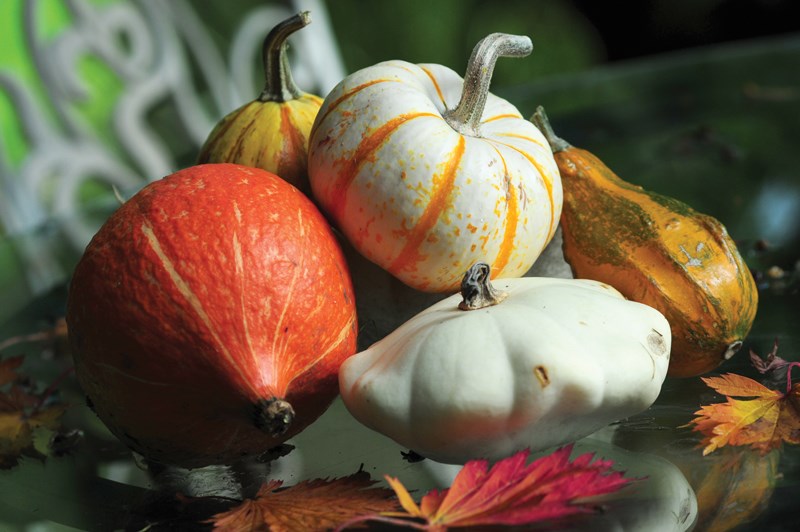Last month I lamented on my poor spinach growing skills, but can now happily report that I have a thriving spinach patch!
Switching to the Space and Seaside varieties was key to having good growth without it quickly bolting.
The summer heat has also sped up my winter squash patch. My spaghetti squash was hit hard by powdery mildew, which is a fungal disease.
The leaves had a grey powdery coating and eventually shriveled up died, so this week I took all the remaining spaghetti squash out of the garden and into our hoop house to finish ripening and curing. Had I not had such bad luck with the powdery mildew the squash could have finished ripening on the vine for another week or two before being brought in from the field. The remainder of my winter squash patch will come in for curing over the next few weeks. The easiest indicator that winter squash are ready to be harvested is the fingernail test; the squash is ready when you can press your thumbnail into the outer skin and it does not leave a mark. Once they’re ready to be harvested cut them off the stem leaving three inches of stem on the squash – don’t use this as a “handle.” Cure them by leaving them in a warm, dry, sunny spot for about two weeks. Now they will store well for four to eight months depending on the variety.
It’s time to think about planting winter cover crops. There are many different types of crops that can be used, but the easiest to grow and get seed for are fall rye and a pea and oat mix. Cover crops are used to reduce soil erosion in the winter, to add nitrogen or organic matter to the soil, and to improve the overall health and structure of your soil by giving all those microbes something to interact with over the winter months.
Fall rye can be planted until the end of September (or perhaps later if this warm weather continues), and will probably grow a few inches before frosts and cold weather set in. This is great for people with very sandy or clay soils because it is a fast growing crop that adds a lot of organic matter to soil. About one month before you want to start planting in the spring you will need to “turn over” the fall rye, which means going out with a spade and flipping over chunks of it so the roots are facing the sky. This will kill it, and begin the decomposition process that will give you improved soils after about a month of breaking down.
As soon as early spring rolls around in February it starts growing quickly. I’d recommend mowing it in the spring if it starts growing way before the planting season begins.
In a home garden turning over fall rye in the spring is a labourious task because few of us have a tractor in the garage. Don’t let it grow more than four to six inches tall – beyond that you will have a very sore back from turning it over. Covering it with a tarp after you have turned it over may also help it break down faster.
Peas are legumes that add nitrogen into the soil, and are usually mixed with oats so they have something to grow up. When the oats break down they also add organic matter to the soil – that lovely crumbly hummus that good soil has. A pea and oat cover crop needs to be planted in late August to early September because it needs to have enough time to grow well enough to cover your soils and add nutrients before it dies over the winter. These “winter kill” cover crops are much easier to deal with in the spring because you don’t need to turn them over, but they tend to be harder to fit into garden plantings because we still have full garden beds at the end of August.
If you like to experiment I would encourage you to throw a few pea and oat seeds in amongst your veggie patch now, and see how they grow up around your other crops as they wind down.
Happy soil building!
Emily Jubenvill grew up on the North Shore and is passionate about growing fresh organic food. She’s working on her organic farm and homestead in Enderby, BC. You can reach her at [email protected] or on Instagram at emily.enderberry.



